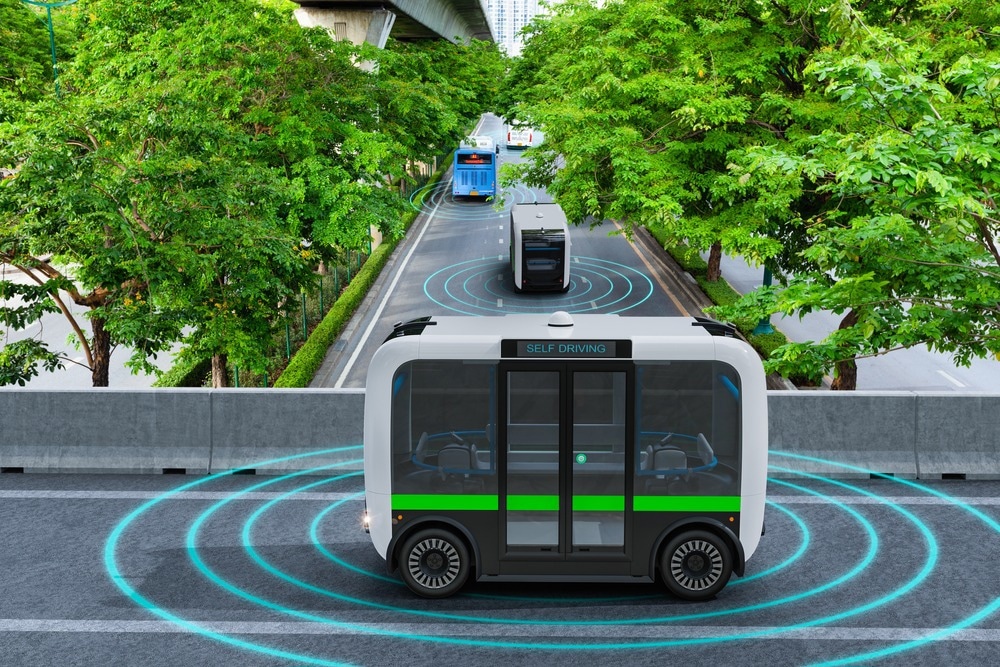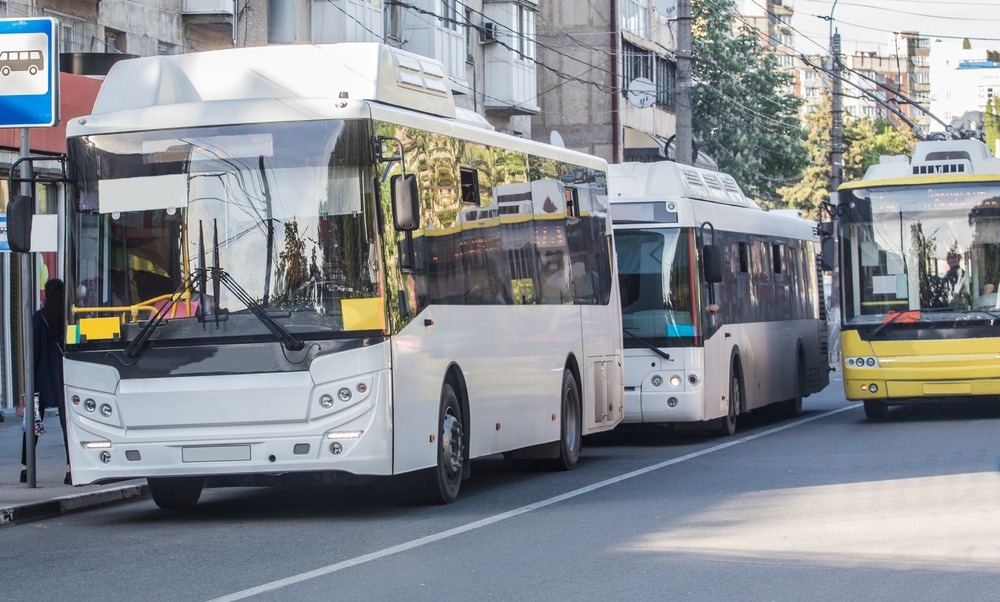Robotic systems are already indispensable in many sectors, opening up new possibilities and channels for innovation. One such sector, public transport, is one of the industries that stand to benefit the greatest from robotics.

Image Credit: Suwin/Shutterstock.com
Public transit is more than just getting passengers from point A to point B. Many people depend on public transit in their everyday lives, and any issues with public transportation systems may have a negative influence on their lives.
To counteract these issues, countries have looked to autonomous robotic buses to alleviate commuting concerns and other challenges associated with public transportation.
Caveats of Current Transport Systems
With so many people utilizing public transportation, the regular issues that arise may be stressful for passengers and transportation operators. Even while public transit is a considerably more ecologically friendly mode of transportation than cars, many conventional public transit systems continue to use outdated technology, which contributes significantly to global pollution.
Customers now anticipate greater convenience, comfort, and personalization as technology is increasingly interwoven into their lives.
Another prevalent concern with public transportation is commute delays. Public transit often suffers from delays for various reasons, the majority of which are human-related.
Public transportation is a complex enterprise with numerous moving pieces, making it difficult to manage efficiently. A single mistake or lag at a particular link in the chain might trigger a cascade of difficulties farther down the chain. Thus, to manage this complex system, countries around the world are infusing robotics with public transportation.
Transportation and Robotics
The use of robotic systems in public transportation is a relatively new phenomenon. Yet despite their novelty, robotic systems have already achieved substantial advances in the transportation sector, spurring innovation over a wide range of sub-sectors and industries.
These advances are to such an extent that modern public transportation would be unrecognizable without robotic systems, and the future would only help to reinforce this.
Self-driving vehicles are perhaps the most classic example of robotic systems driving transportation innovation. While autonomous automobiles have yet to become a reality, independent features within automobiles have already improved significantly, with cars of today employing robotic systems such as automatic braking, lane assist, and adaptive cruise control.
It is worth noting that even though completely autonomous cars have proven difficult, automating public transportation may be a simpler task. Buses, trams, trains, and shuttles follow defined itineraries, giving the dependability that today's robotic systems require. They also usually travel in designated areas, limiting the possibility of colliding with other vehicles.
Benefits of Robotic Systems in the Public Transportation Sector
The positive effects of robotic systems are far-reaching, impacting how humans travel and how cargo is moved. Robotic systems can aid vehicle automation, eventually leading to completely autonomous driving. Blind-side monitoring is already being used in automobiles to alert drivers about the presence of pedestrians, bicycles, cars, and other items that are not visible from within the vehicle.
Increased uptake of robotic systems may decrease total emissions via more effective traffic management systems, ensuring that public transportation vehicles run closer to full capacity and arranging itineraries to avoid traffic circumstances that result in reduced vehicle efficiency.
As actions become more automated, robotic systems may play a significant role in safety as well. Since human errors are the leading cause of car collisions, robotic systems may help improve safety by boosting driver awareness and substituting error-prone human decision-making with highly accurate robotic decisions.
'Robobuses' - How Do They Work? Where Are They?
A "Robobus" is a fully autonomous bus with no steering wheel, accelerator, or brakes and is designed for open metropolitan roadways. Employing full-stack software and hardware solutions, these self-driving buses can manage different and complicated urban traffic circumstances.
The "Robobus" provides automated driving without human involvement, enabling a more effective method of transportation with enhanced safety to complement.
The "Robobus" is now in use in many nations throughout the globe, with the most recent deployment in Tampere, Finland, to see whether autonomous buses can ever become a component of Tampere's public transit system.
In 2017, the German city of Bad Birnbach began testing autonomous buses. The buses completed over 10,000 kilometers of autonomous travel and carried over 20,000 people in their first year.
In addition to Finland and Germany, countries such as Saudi Arabia, Singapore, and China are also testing robot buses to address public transportation issues.

Image Credit: Mikbiz/Shutterstock.com
What Companies Design These Robot Buses?
Robot buses have grown so popular that several firms across the globe are currently producing them. These businesses provide full-stack solutions, which include the entire hardware and software implementation.
WeRide and Sensible4 are two of the most famous businesses involved in the creation of robot buses. Sensible4, a Finnish startup, is an Automated Driving Technology Company with the goal of allowing self-driving transportation everywhere.
Sensible4 has recently chosen to deploy robobus lines in the Finnish cities of Tampere and Helsinki with the assistance of DAWN, an automated driving software platform that allows various kinds of vehicles to run independently in all weather conditions.
Future Outlook
Self-driving vehicles currently need some human interaction, but there will be a day when this is not required.
It is projected that within the next five years, autonomous bus technology will be mature enough to enable driverless buses to operate seamlessly alongside other vehicles in various urban municipalities.
Simultaneously, these robotic public transport systems will become more widespread in cities to handle the final kilometer journey, which is transporting people from public transportation hubs or stations right to their front doors.
References and Further Reading
YLE (2022). Tampere to launch regular robot bus operations this year. YLE. Available at: https://yle.fi/news/3-12618912
YLE (2022). Tampere's "robot bus" rolls out for public trials. YLE. Available at: https://yle.fi/news/3-12266375
Banks, M. (2021). Robots Continue to Drive Innovation in Modern Transportation. Robotics Tomorrow. Available at: https://www.roboticstomorrow.com/story/2021/08/robots-continue-to-drive-innovation-in-modern-transportation/17335/
YLE (2019). Driverless 'robobus' taking passengers on test runs in Helsinki. YLE. Available at: https://yle.fi/news/3-10825602
Disclaimer: The views expressed here are those of the author expressed in their private capacity and do not necessarily represent the views of AZoM.com Limited T/A AZoNetwork the owner and operator of this website. This disclaimer forms part of the Terms and conditions of use of this website.